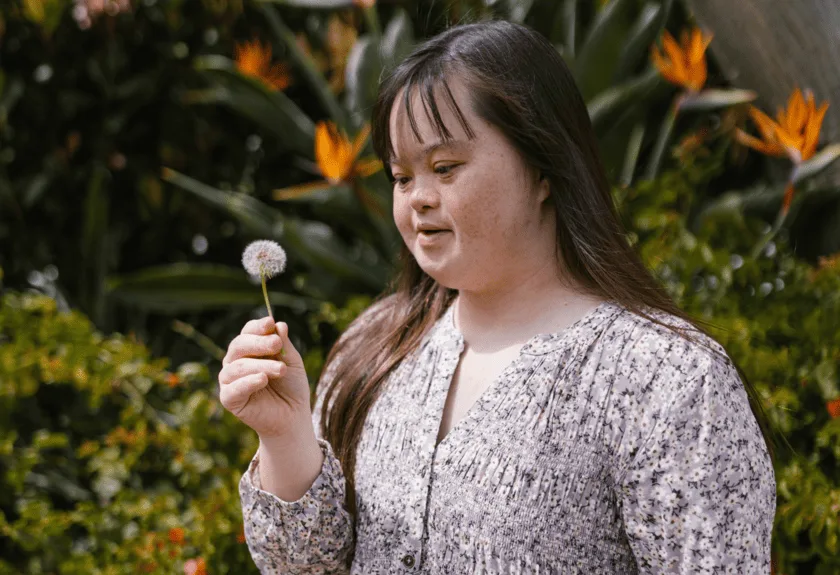Understanding Spirituality
What Spirituality Means in Everyday Life
Spirituality is often misunderstood as something abstract or reserved for monks and mystics. In reality, it’s deeply personal and accessible to everyone. At its core, spirituality is about connecting with something greater than yourself—whether that’s nature, the universe, or your inner self. It’s the practice of finding meaning and purpose in daily life, even in the smallest moments. For some, it might mean pausing to appreciate a sunrise or practicing gratitude; for others, it could involve reflecting on life’s bigger questions. Spirituality isn’t confined to grand gestures—it thrives in the quiet, everyday acts of mindfulness and self-awareness.
How Spirituality Differs from Religion
While spirituality and religion often overlap, they are not the same. Religion is typically rooted in structured beliefs, rituals, and community practices, often guided by specific doctrines. Spirituality, on the other hand, is more fluid and individualistic. It’s about personal exploration rather than adherence to a set of rules. You can be spiritual without being religious, and vice versa. For example, someone might find a sense of peace through meditation (a spiritual practice) without subscribing to any particular faith. Spirituality is less about dogma and more about cultivating a sense of connection and inner peace.
The Benefits of Cultivating a Spiritual Practice
Incorporating spirituality into your life can have profound benefits, especially for those juggling busy schedules. Here are a few ways it can enhance your well-being:
- Reduced Stress: Spiritual practices like meditation or mindful breathing can help calm the mind and reduce anxiety.
- Greater Resilience: By fostering a deeper sense of purpose, spirituality can help you navigate life’s challenges with more grace.
- Improved Relationships: A spiritual mindset often emphasizes compassion and empathy, strengthening your connections with others.
- Enhanced Self-Awareness: Regular reflection can help you understand your values, desires, and emotions more clearly.
Even simple practices, like journaling or spending time in nature, can make a significant difference. The key is to find what resonates with you and integrate it into your routine in a way that feels natural and sustainable.
Creating Space for Reflection
Carving Out Moments in a Busy Schedule
In the hustle and bustle of daily life, finding time for reflection can seem impossible. However, small, intentional pauses can make a significant difference. Start by identifying moments in your day that feel less rushed—a quiet morning coffee, a lunch break, or even the few minutes before bed. These pockets of time, no matter how brief, can become opportunities for introspection and connection with your inner self.
Consider integrating reflection into existing routines, like during your commute or while waiting for a meeting to start. The key is to be consistent and treat these moments as non-negotiable appointments with yourself.
Simple Practices for Reflection
You don’t need elaborate tools or hours of solitude to reflect. Start with practices that are easy to incorporate into your day:
- Journaling: Spend a few minutes writing down your thoughts, feelings, or even a single thing you’re grateful for. This helps clarify your mind and track your emotional journey.
- Mindful Breathing: Take five deep breaths, focusing solely on the sensation of inhaling and exhaling. This simple act can ground you in the present moment.
- Setting Intentions: Begin your day by silently stating what you wish to focus on—whether it’s patience, gratitude, or simply staying present.

These practices require minimal effort but can create a profound sense of awareness and calm.
The Power of Silence and Stillness
In a world filled with constant noise, silence and stillness are rare gifts. Allowing yourself moments of quiet can help you reconnect with your inner voice and gain clarity. This doesn’t mean you need to meditate for hours—even a few minutes of sitting in silence can be transformative.
Try to find a quiet space—whether it’s a park, a corner of your home, or simply turning off notifications on your phone. Use this time to listen—to your thoughts, your body, or even the sounds around you. Silence can be a powerful teacher, helping you tune into what truly matters.
Connecting with Nature
Why Nature is a Gateway to Spiritual Awareness
Nature has long been revered as a profound source of spiritual connection. Its vastness and beauty remind us of something greater than ourselves, offering a sense of peace and perspective that is often elusive in our busy lives. The rhythms of the natural world—like the rising sun, the ebb and flow of tides, or the changing seasons—mirror the cycles within us, helping us tune into our inner selves. Whether it’s the stillness of a forest or the expansiveness of the ocean, nature invites us to slow down, breathe deeply, and reconnect with the present moment. This mindful connection can awaken spiritual awareness, allowing us to feel more grounded and aligned with our true essence.
Easy Ways to Incorporate Nature into Your Routine
You don’t need to venture far to experience the benefits of nature. Small, intentional changes can make a big difference. Here are a few simple ideas:
- Morning walks: Start your day with a stroll in a nearby park or even your backyard to soak in the morning light and fresh air.
- Indoor plants: Bring the outdoors in by adding a few houseplants to your living or workspace. They purify the air and add a calming touch of greenery.
- Outdoor breaks: Take short breaks during your day to step outside, even if it’s just for a few minutes. Feel the breeze, listen to birds, or watch the clouds.
- Mindful gardening: Tending to plants, whether in a garden or a small pot, can be a meditative and rewarding practice.
These small gestures can help you weave nature into your daily life, creating moments of calm and connection.
The Healing Effects of Spending Time Outdoors
Spending time in nature is not just soothing for the soul—it’s scientifically proven to benefit your overall well-being. Studies show that being outdoors can reduce stress, lower blood pressure, and boost your mood. Natural sunlight helps regulate your circadian rhythm, improving sleep quality, while the sights and sounds of nature can calm your nervous system. Even a brief encounter with nature, like sitting under a tree or walking along a trail, can provide a mental reset, helping you feel rejuvenated and more focused. Nature’s healing power lies in its ability to remind us of our interconnectedness with the world, fostering a sense of harmony and balance.
Exploring Meditation and Mindfulness
Beginner-Friendly Meditation Techniques
Starting a meditation practice can feel daunting, especially if you’re new to it. But the truth is, meditation doesn’t have to be complicated or time-consuming. Here are a few simple techniques to help you ease into it:
- Breath Awareness: Sit comfortably, close your eyes, and focus on your natural breath. Notice the sensation of air entering and leaving your body. If your mind wanders, gently bring it back to your breath.
- Body Scan: Slowly bring your attention to each part of your body, starting from your toes and moving upward. Notice any tension and allow it to release.
- Guided Meditation: Use apps or online resources for guided sessions. These can provide structure and help you stay focused.
Remember, even five minutes a day can make a difference. Consistency is more important than duration.
How Mindfulness Enhances Spiritual Connection
Mindfulness isn’t just about being present—it’s a gateway to deeper spiritual awareness. By cultivating mindfulness, you create space to connect with your inner self and the world around you. Here’s how it works:
- Presence: Mindfulness anchors you in the present moment, helping you let go of distractions and connect with what truly matters.
- Clarity: It allows you to observe your thoughts and emotions without judgment, fostering self-awareness and spiritual growth.
- Gratitude: Practicing mindfulness helps you appreciate the small moments, deepening your sense of connection to life.
Think of mindfulness as a bridge between your daily life and your spiritual journey. It’s about finding the sacred in the ordinary.
Tips for Staying Consistent with Your Practice

Consistency is often the biggest challenge when starting a meditation or mindfulness practice. Here are some practical tips to help you stay on track:
- Start Small: Begin with just a few minutes a day and gradually increase as it becomes a habit.
- Set reminders: Use alarms or calendar alerts to carve out time for your practice.
- Create a Routine: Tie your practice to an existing habit, like meditating right after waking up or before bed.
- Be Kind to Yourself: If you miss a day, don’t stress. Simply start again the next day. Progress, not perfection, is the goal.
Consider journaling about your experiences to track your progress and reflect on how the practice impacts your life. This can also help you stay motivated and connected to your spiritual goals.
Embracing Rituals and Practices
Daily Rituals to Ground and Center Yourself
In the hustle of everyday life, carving out moments for grounding can feel daunting, but it doesn’t have to be complicated. Start small—perhaps with five minutes of deep breathing upon waking or a mindful pause before bed. These practices help you reconnect with your body and mind, creating a sense of stability amidst chaos. Consider integrating simple rituals like:
- Morning stretches or yoga to awaken your body
- Mindful tea or coffee drinking, focusing on the sensations
- Evening journaling to release the day’s thoughts
Remember, consistency matters more than duration. Even a few moments of intentional stillness can make a difference.
The Role of Gratitude and Affirmations
Gratitude and affirmations are powerful tools to shift your mindset and cultivate positivity. Gratitude helps you focus on what you already have, fostering contentment and reducing stress. Try keeping a gratitude journal or simply mentally acknowledging three things you’re thankful for each day.
Affirmations, on the other hand, can rewire your thought patterns. Choose phrases that resonate with you, such as “I am worthy,” “I am capable,” or “I am at peace.” Repeat them aloud or write them down to reinforce self-belief and resilience.
“Gratitude transforms what we possess into all that we need.”
How to Personalize Your Spiritual Path
Spirituality is deeply personal, and there’s no one-size-fits-all approach. Begin by exploring practices that feel authentic to you—whether it’s meditation, prayer, nature walks, or creative expression. Listen to your intuition.
Here are some tips to customize your journey:
- Experiment: Try different practices and notice what resonates.
- Adapt: Modify routines to fit your schedule and preferences.
- Reflect: Regularly check in with yourself to assess what’s working and what isn’t.
Above all, give yourself permission to create a path that feels uniquely yours, free from comparison or judgment.
Overcoming Challenges
Common Obstacles in Spiritual Growth
The path to spiritual growth is rarely linear, and it’s natural to encounter obstacles along the way. Some of the most common challenges include:
- Self-doubt: questioning whether you’re “doing it right” or if you’re even capable of deepening your spirituality.
- Lack of time: feeling overwhelmed by daily responsibilities and struggling to carve out moments for spiritual practices.
- External distractions: being pulled in different directions by societal expectations, relationships, or technology.
- Fear of change: hesitating to let go of old habits or beliefs that no longer serve you.
Recognizing these obstacles is the first step toward overcoming them. Remember, these challenges are part of the journey, not signs of failure.
How to Stay Motivated When Progress Feels Slow
Spiritual growth often unfolds in subtle ways, and it’s easy to feel discouraged when progress isn’t immediately visible. Here are a few strategies to stay motivated:
- Celebrate small wins: whether it’s a moment of mindfulness or a deeper connection with your inner self, acknowledge these victories.
- Reflect on your “why”: reconnect with the reasons you embarked on this journey. What drew you to spirituality in the first place?
- Track your journey: journaling or meditating can help you notice shifts in your thoughts, emotions, and perceptions over time.
- Find community: sharing your experiences with like-minded individuals can provide encouragement and perspective.
Remember, growth is often invisible until it’s not. Trust the process, even when it feels slow.
The Importance of Self-Compassion and Patience
Spiritual growth is deeply personal, and comparing your journey to others’ can lead to frustration. Instead, cultivate self-compassion and patience:
- Be kind to yourself: treat yourself with the same understanding and gentleness you would offer a close friend.
- Embrace imperfection: setbacks and mistakes are natural. They don’t diminish your progress; they’re part of learning.
- Practice patience: spiritual growth is a lifelong journey, not a race. Allow yourself the time and space to evolve at your own pace.
- Focus on the present: instead of fixating on where you think you should be, appreciate where you are right now.
By nurturing self-compassion and patience, you create a supportive inner environment that fosters sustainable spiritual growth.

Integrating Spirituality into Daily Life
Spirituality isn’t confined to meditation cushions or sacred spaces—it thrives in the small, intentional moments of everyday life. By weaving spiritual practices into your routine, you can cultivate a sense of peace and purpose that transcends the chaos of a busy schedule. Here’s how to make spirituality a seamless part of your day-to-day existence.
Small, Actionable Steps for Lasting Change
Start small and stay consistent—this is the golden rule for integrating spirituality into your life. Begin with manageable practices that don’t require drastic changes to your routine:
- Morning gratitude: Take a moment each morning to reflect on three things you’re grateful for.
- Mindful breathing: Pause for three deep breaths whenever you feel stressed or overwhelmed.
- Daily intention: Set a simple intention for the day, such as kindness, patience, or presence.
These small habits, practiced consistently, can create a profound shift in how you experience life.
Balancing Spirituality with Work and Relationships
Finding harmony between your spiritual journey and the demands of work and relationships can feel challenging, but it’s entirely possible. Here are a few tips to strike that balance:
- Set boundaries: Carve out sacred time for yourself, even if it’s just 10 minutes a day.
- Be present: Bring mindfulness into your interactions—listen deeply and engage fully with loved ones and colleagues.
- Find meaning: View your work as an expression of your values, whether it’s service, creativity, or growth.
Remember, spirituality isn’t about escaping reality—it’s about transforming how you engage with it.
Building a Supportive Community
Your spiritual journey doesn’t have to be a solitary one. Surrounding yourself with like-minded individuals can provide encouragement, accountability, and a sense of belonging. Here’s how to build a supportive community:
- Join groups: Look for local or online communities focused on meditation, yoga, or spiritual growth.
- Share openly: Be willing to discuss your experiences and challenges with trusted friends or mentors.
- Offer support: Just as you seek encouragement, be a source of inspiration for others on their paths.
A shared journey is often a richer and more fulfilling one.
FAQ: Integrating Spirituality into Daily Life
Q: How do I stay consistent when life gets overwhelming?
A: Focus on micro-practices—small, manageable actions that fit into even the busiest days. Consistency doesn’t require perfection; it’s about showing up, even in small ways.
Q: Can spirituality coexist with a busy career?
A: Absolutely. Spirituality isn’t about escaping your responsibilities—it’s about infusing them with mindfulness, purpose, and compassion.
Q: How do I find a supportive community?
A: Start by exploring local meetups, online forums, or classes in practices you’re drawn to. Be open to connecting with others who share your values and goals.
By taking these steps, you can integrate spirituality into your daily life in a way that feels authentic, sustainable, and deeply fulfilling. Remember, the journey is about progress, not perfection—every small effort moves you closer to a more balanced and meaningful life.
Reference:
- Puchalski, C. M., Vitillo, R., Hull, S. K., & Reller, N. (2014). Improving the spiritual dimension of whole person care: reaching national and international consensus. Journal of Palliative Medicine, 17(6), 642–656. https://doi.org/10.1089/jpm.2014.9427
- Koenig, H. G. (2012). Religion, spirituality, and health: The research and clinical implications. ISRN Psychiatry, 2012, 278730. https://doi.org/10.5402/2012/278730
- Manning, L.K., Ferris, M., Rosario, C.N., Prues, M., & Bouchard, L. (2019). Spiritual resilience: Understanding the protection and promotion of well-being in the later life. Journal of Religion, Spirituality & Aging, 31(2), 168–186. https://pmc.ncbi.nlm.nih.gov/articles/PMC7743140
- Sutton, A. (2016). Measuring the Effects of Self-Awareness: Construction of the Self-Awareness Outcomes Questionnaire. Europe’s Journal of Psychology, 12(4), 645–658. https://doi.org/10.5964/ejop.v12i4.1178
- Hansen, M. M., Jones, R., & Tocchini, K. (2017). Shinrin-Yoku (forest bathing) and nature therapy: A state-of-the-art review. International Journal of Environmental Research and Public Health, 14(8), 851. https://doi.org/10.3390/ijerph14080851





























